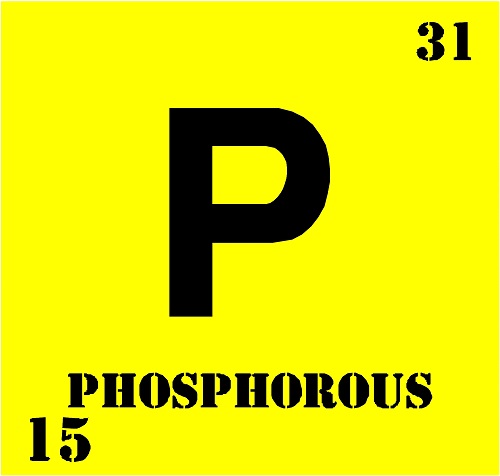
Phosphorus (P) is an essential major plant nutrient element, although among the other major elements, nitrogen (N), potassium (K), calcium (Ca), magnesium (Mg) and sulfur (S), its requirement level for most plants is equal to or less than that for Ca, Mg and S. In the past, P deficiency among major crop plants was not uncommon as most initially cropped soils were deficient in this element as well as being either acidic or alkaline, soil conditions that will reduce P availability. In addition, early growing conditions, such as cool environmental (soil and air) temperatures, will reduce P absorption as well as affected its function within the plant. To partially overcome this potential, a P-containing fertilizer would be applied as a band next to the seeding row, a procedure known as “side row application.”
As mixed NPK chemical fertilizers came into wide use, the commonly used P source in these NPK mixes was 20% superphosphate (20% P), a substance that gives desired physical properties to such mixes. With advancing technology, triple-superphosphate (45% P) became the common ingredient in mixed fertilizers which resulted in increasing the P level in most fertilizers. Ammoniated forms of P, commonly known by their acronyms as MAP (monoammonium phosphate) and DAP (diammonium phosphate), came into wide use, primarily as liquids or suspensions. Today, most cropland soils, as a result of the long-term use of mixed grade fertilizers that included P, are no longer P deficient with an increasing number of these soils frequently being high to excessive in this element.
In the soilless and hydroponic culture of plants, P excess can easily occur as many nutrient element formulations frequently contain higher P levels (>30 ppm) than that required by the plant. Fertilizers known as “supplements” recommended for “stimulating” early plant growth are usually high P-containing materials and therefore need to be used with caution. Excess P within the plant will reduce plant growth and can result in deficiencies of iron (Fe) and zinc (Zn). A plant tissue analysis can be used to determine if the P level in the plant is within the sufficiency range, that being between 0.3 to 0.5% P of the dry weight of tissue. Plant growth and possible deficiency symptoms of either Fe or Zn will occur when the plant tissue contains more than 1.00% P.
Growers should be cautious when selecting a nutrient solution or fertilizer formulation, one that contains more than 3 to 5% P as P2O5, while formulators need to be equally aware that their product(s) may contain a P level that can result in excess accumulation in the rooting medium and in turn, adversely affect the nutritional status of the growing plant. Foliar application of P, either alone or within a fertilizer mix, will not be of benefit to the plant as leaf penetration (absorption) is not likely to occur with the possibility of its presence on a leaf surface will cause damage. It should be remembered that the form of P in most fertilizers and reagents is as the phosphate anion (P043-), and anion that is highly reactive and can easily interact with other elements in the environment, whether it be in soil, a soilless organic mix, or a nutrient solution. In conclusion, P is an essential plant nutrient element required by all plants to grow normally, an essential friend, but when in excess, it can be a significant foe, reducing plant growth and product yield.
Dr. J. Benton Jones, Jr. has a PhD in Agronomy and is the author of several books. Dr. Jones has written extensively on hydroponic growing and outdoor vegetable gardening employing sub-irrigation hydroponic growing systems.
Related Articles & Free Email Newsletter Sign Up
Before Buying a Chemical Fertilizer – READ THE LABEL!
Calcium is the Forgotten Fertilizer
How to Diagnose and Correct Nutrient Deficiencies in Plants in Indoor Gardens




Comment here